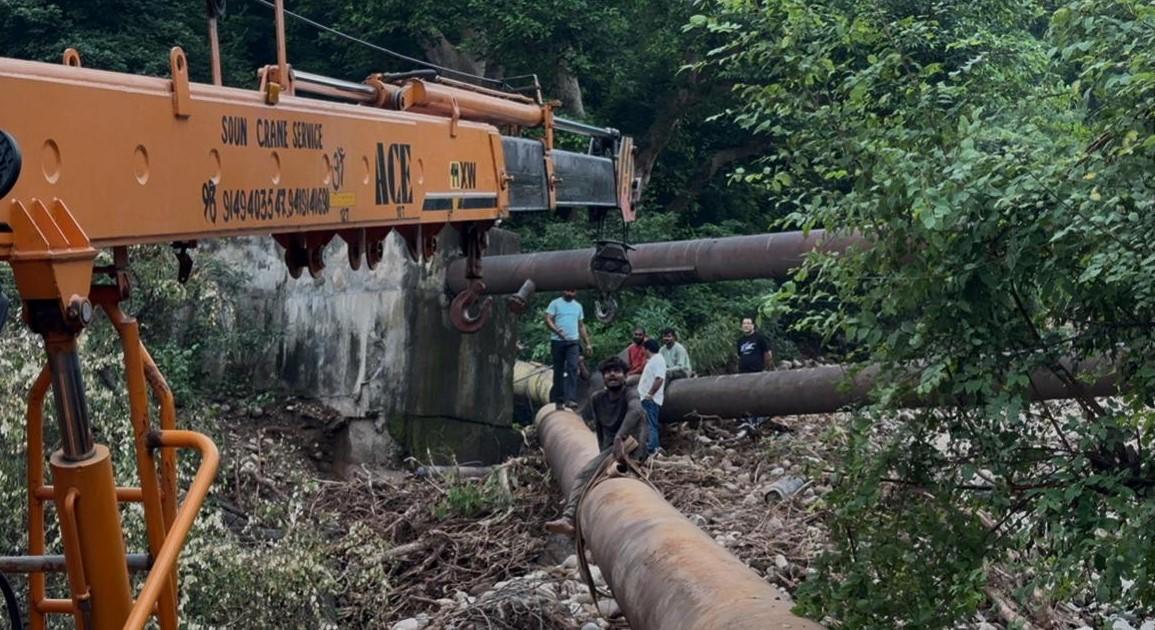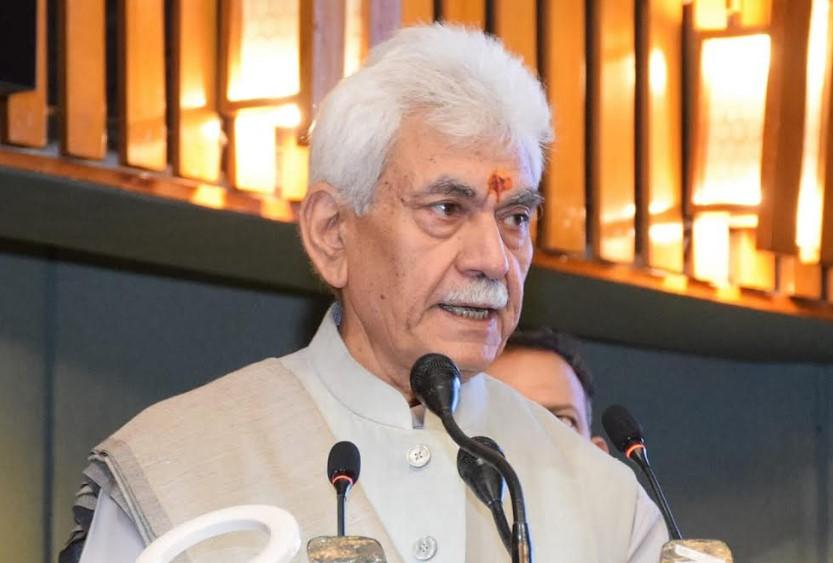The catastrophic floods, attributed to the severest rainfall witnessed by Jammu in nearly a century, caused unprecedented damage to the water supply infrastructure. The flood level in river Tawi reached 34 feet, surpassing even the disastrous level of 33 feet recorded in 2014.
The Tawi Water Treatment Plant was badly affected, while massive landslides on the road from Panjtirthi to Sidhra Bridge extensively damaged more than 500 meters of the Sitlee-Lohar and Sitlee-Manda transmission pipelines, disrupting supplies to the Old City, Janipur, Rehari Colony, New Plot, SubhashNagar, Sarwal, Chinoreand Roop Nagar areas. A critical rising main (water pipeline)connecting fivetubewells along the left bank of the River Tawi between Bikram Chowk Bridge to Gujjar Nagar Bridge, feeding Boria Water Filtration Plant was extensively damaged alongwith pump room, HT line, poles transformer and panels.Large amounts of debris and silt also accumulated at the Boria Intake and Dhounthly Water Treatment Plants.
The entire hilly terrain had slid into the road and beyond towards the Tawi river, leaving huge blocks of mulba. The 500 mm dia rising main was washed away along with heavy concrete blocks, while the 600 mm dia rising main also suffered major damage with portions hanging in the air. The 500 mm diaSitlee-Lohar rising main was washed away at RD 1350 (around 30 metres). Once the approach road was cleared, men and machinery were deputed immediately.
As restoration along the existing alignment was not feasible, both rising mains were re-aligned along the road using 600 mm dia MS casing pipes available with the department.
Considering the fact that the entire supply of the Jammu City is dependent upon lift schemes, the Jal Shakti Department promptly intervened to restore water production, deploying its technical staff across the province. The Department meticulously assessed damage at Sitlee, Lohar, Manda, Boria, and Dhounthly and orchestrated arrangements for materials, tools, equipment, cranes, welding sets, generators, and a trained workforce. Despite adverse weather and continuous rainfall, rehabilitation began within 24 hours.
Skilled labour mobilized by JMC from neighbouring states worked tirelessly in the sliding zones to re-lay the 600 mm and 500 mm dia rising mains on the hilly terrain. Although these pipelines suffered extensive damage due to floods of 25thand 26thAugust, subsequently more damages were reported on 29th and 30th August due to heavy rains, yet round-the-clock efforts ensured that regular water supply through Sitlee, Lohar, and Dhounthly was partially restored within a week.
Parallelly, as power supply was restored, 70% of the tubewells in urban Jammu were operationalized within 48 hours and the remaining within 72 hours, ensuring nearly half of the city's potable water demand was met. As part of the emergency response, irrigation pumps from the Ravi Tawi system were promptly deployed to maintain raw water supply to the Boria Filtration Plant.In one week, from 30th August to 6th September, overall water supply improved from 39 MGD to 50 MGD, against a pre-disruption level of 62 MGD.
It may be recalled that in February 2021, the management of urban water supply infrastructure was transferred to Jammu Municipal Corporation under the 74th Constitutional Amendment, while the Jal Shakti Department continued to provide technical expertise through its manpower on deputation.While Jal Shakti Department focused on water production, water distribution to the public was managed by the Jammu Municipal Corporation.
Till restoration was achieved, JMC maintained tanker supply across the city. To meet the emergency, the Deputy Commissioner Jammu inducted an additional fleet of 90 tankers and, by invoking Section 163 of the BharatiyaNagarik Suraksha Sanhita (BNSS), 2023, regulated all private tanker operators and borewell filling operations. This enabled nearly 5000 tanker trips within six days to hospitals, old age homes, police stations, community centres, and affected residential areas, free of cost.
The coordinated efforts of the Jal Shakti Department in restoring bulk production, the Jammu Municipal Corporation in ensuring distribution, and the District Administration in providing regulatory and logistical support, successfully mitigated the impact of the disaster and ensured uninterrupted relief to the citizens of Jammu during one of the gravest crises in recent memory.




